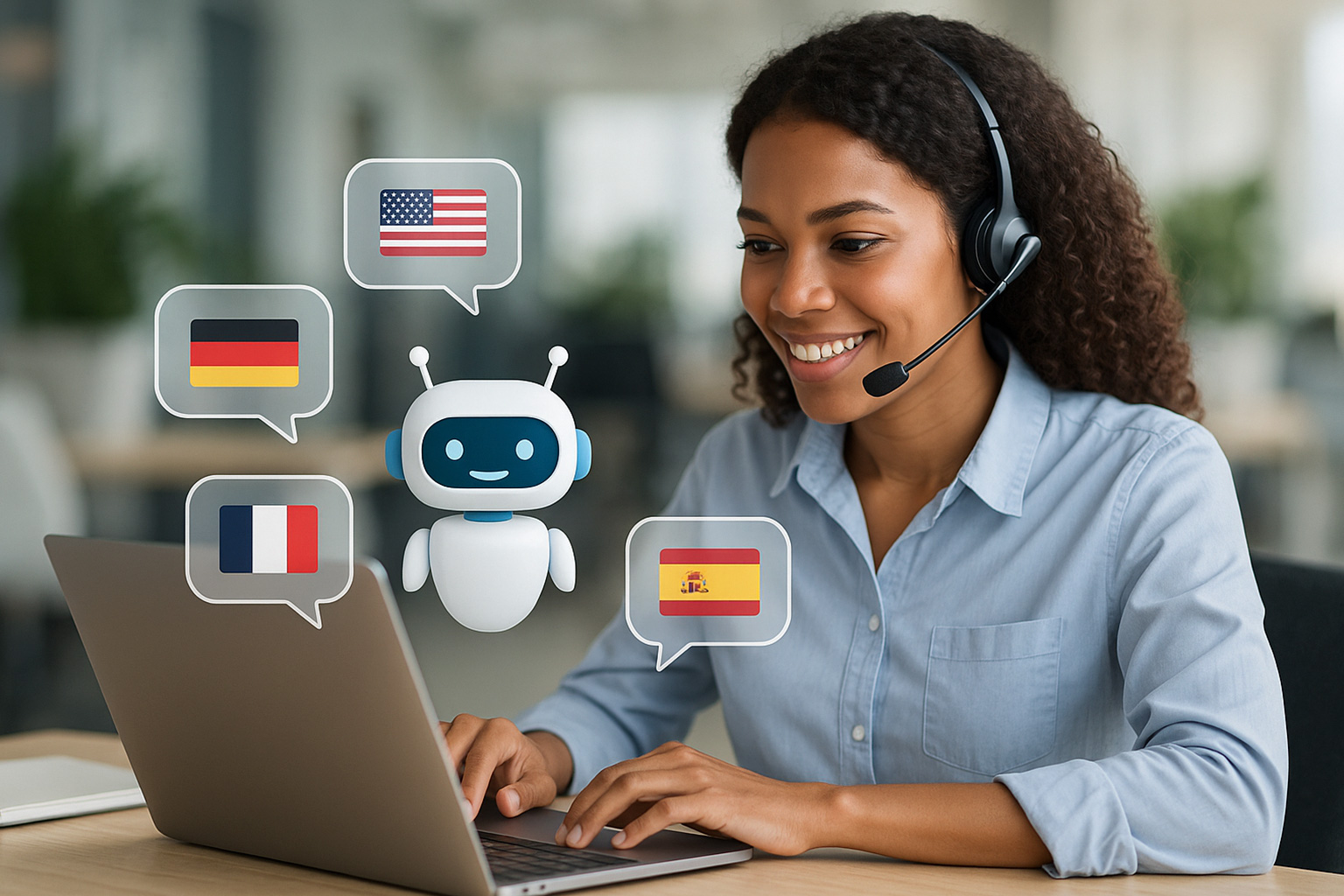How to Create a Multilingual Chatbot in 2025 to Improve Global Customer Experience, Benefits of Multilingual Chatbots for Businesses

02 Oct 2025
Let's imagine this: A client living in Paris is shopping on your website at 2 AM. Another in Tokyo is comparing products during their lunch break. Someone else in São Paulo has a quick question about shipping fees. All they need is answers, which should be fast, accurate, and in their own language.
They all want responses that are precise, quick, and in their native tongue.
A multilingual AI chatbot can help with that.
A multilingual chatbot created by 2025 will not only be a cool feature but also essential to business. No matter whether you have a startup, expanding all over the world, or your enterprise with millions of customers, a multilingual chatbot can provide that little extra, increase loyalty, and provide an experience that customers will feel is local, despite their location.
So, how can a multilingual chatbot be developed that works in 2025?
Why Multilingual Chatbots Matter in 2025
Globalization has made the world smaller, but language is still a big barrier. Here’s the reality:
- Most shoppers prefer to buy in their native language.
- Many won’t purchase if customer support is only available in English.
- And customers who feel “understood” by a brand are more likely to stick around long-term.
This is why creating multilingual chatbots is so revolutionary. It enables companies to:
- Offer round-the-clock, multi-time zone customer service.
- Build trust and satisfaction by speaking customers’ languages.
- Raise savings in terms of automation of multi-language support.
- Maintain brand voice across the globe.
Overall: A chatbot that speaks multiple languages to international clients will make your company seem like it belongs locally in any place.
Benefits of Multilingual Chatbots for Businesses
Let’s get real. Customers today don’t care how advanced your technology is. They care about how it makes their lives easier. Here’s what multilingual chatbots bring to the table:
1. Always-On, Always-Local Support: No more “business hours only.” Your bot is awake when your customers are.
2. Happier Customers, Happier Teams: Agents don’t need to juggle five languages; your chatbot takes the load off.
3. Lower Costs, Higher Impact: Scaling human support in 10+ languages is expensive. A multilingual AI chatbot makes it affordable.
4. Fewer Lost Sales: An intelligent chatbot that describes shipping, payments, or returns in the language of the customer eliminates friction and increases conversions.
5. Future-Proofing Your Brand: In a competitive world where globalization is increasing, cross-language chatbot solutions will bring those brands that evolve with them and leave the rest behind..
How to Build a Multilingual Chatbot in 2025: Step by Step
Okay, let’s get practical. Here’s a roadmap to building your chatbot.
Step 1: Define the “Why”
What’s your chatbot’s mission?
- Support for e-commerce customers?
- Handling FAQs for international users?
- Lead generation across regions?
Your goals shape everything, from the chatbot platform to the languages you prioritize.
Step 2: Choose the Right Tech Approach
Two main paths:
- Rule-based + translation APIs: Easy, yet artificial intelligence.
- AI-based NLP: Wiser, more contextual, more natural.
The successful strategy in 2025 is the AI chatbots with integrated translation and intent recognition; they do not replace words with other words, they comprehend them.
Step 3: Pick Your Tools
Some of the best multilingual chatbot development tools in 2025 include:
- Google Dialogflow CX – great for multi-language flows.
- Microsoft Bot Framework – solid for enterprise systems.
- Rasa + translation APIs – flexible, open-source.
- Intercom + AI plugins – perfect for startups.
Choose a tool that fits your budget, scale, and tech stack.
Step 4: Train with Real Language Data
This is where the magic happens. Don’t just rely on direct translations, train your bot with:
- Local slang and cultural phrases.
- Region-specific FAQs.
- Datasets that include contextual, conversational language.
Because a great conversational AI for multilingual users doesn’t just speak the language, it sounds natural.
Step 5: Integrate with Your Systems
A chatbot is only as good as the systems behind it. Connect it to:
- Your CRM for customer history.
- E-commerce websites that track orders.
- Ticket management helpdesks.
- Refund and update payment systems.
That way, your customer support chatbot 2025 doesn’t just chat, it solves problems.
Step 6: Test, Localize, Improve
- Test the bot with real users across devices and regions.
- Localize, don’t just translate. (Example: Spanish in Spain is not the same as Spanish in Mexico.)
- Track performance: How many issues did it solve? How fast? Were customers satisfied?
The best multilingual chatbots for international businesses are always learning and improving.
Best Practices for Multilingual Chatbots
- Have a consistent tone in all languages.
- Popular messaging apps such as WhatsApp, WeChat, Messenger, etc., should be supported.
- Add voice support: Support the visually impaired by adding voice support.
- Smart note: In some cases, the best thing you can do is to hand over to a human agent.
Real-World Use Cases
- E-commerce: A chatbot based on AI, including language translation, can assist the shopper, suggest products, and manage returns in their language.
- Travel & Hospitality: Multilingual bots can also assist the traveler to make hotel reservations, amend flight bookings, and also provide local tips.
- Finance: The customers of the global banking are assured of instant multilingual support.
- Healthcare: Patients are able to make reservations or review records in their own language.
The Future of Multilingual Chatbots
By 2025, chatbots will not only be able to answer questions but also predict them. Expect:
- Culture-specific tone and style that is AI-controlled.
- Text + voice hybrids to ease the interaction.
- Combination with AR/VR experiences in worldwide customer experiences.
In simple words, your chatbot will not only be a support agent but a globally recognized brand ambassador.
Conclusion
The multilingual chatbot of the future in 2025 is not only about tech, but about customer experience.
When your brand is speaking the language of your customer, you do not just answer questions. You build trust. You drive loyalty. You go worldwide and you are still local.
Therefore, regardless of whether you are a small company with new markets to serve or a company with global growth, it is time to have a multilingual chatbot that performs.
NanoByte Technologies is a company specializing in assisting businesses in creating multilingual AI chatbots to connect with, engage, and delight their customers around the globe. We should make your brand really global, one conversation at a time.


.jpeg)
.jpeg)

